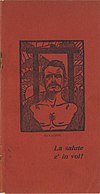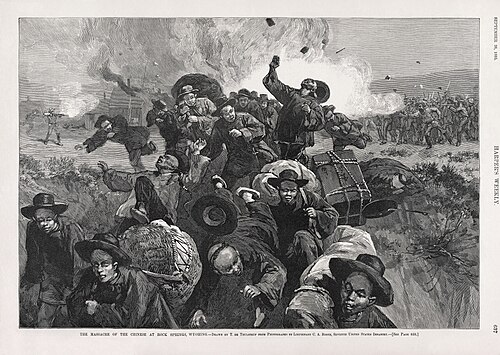User:Allard
Hello and a warm welcome to all my fellow Wikipedians. How nice of you to drop in to see who I am!
Morning>
Wikipedia & me:[edit]
How I discovered Wikipedia, I do not remember. But from being a reader I slowly became a contributor. Although I don't work that much on Wikipedia I do see myself as a Wikipedian. I don't go searching on Wikipedia what I can edit next, I edit what I find and want to do. This means I add and mainly improve a lot of small things and only rarely I make large edits.
My work:[edit]
Articles I've started on Wikipedia:
- Fort Knox Bullion Depository
- Animals are Beautiful People
- Template:David Attenborough Television Series
- Template:Malta Islands
Images I made for Wikipedia:
 Dutch lower house as from 2006
Dutch lower house as from 2006 New image of the Netherlands Air Force Roundel
New image of the Netherlands Air Force RoundelMap on membership of the League of Nations
United Nations membership map
 Improved image of the British Helgoland flag
Improved image of the British Helgoland flag New image showing the current flag of Hel(i)goland
New image showing the current flag of Hel(i)goland
Article guide:[edit]
A list of articles worth looking at, if one can find them:
- Antidisestablishmentarianism
- Ball's Pyramid
- British Isles (terminology)
- Eadweard Muybridge
- Gunpowder Plot
- Horace de Vere Cole
- Humphrey (cat)
- Islomania
- List of countries by date of nationhood
- List of flags
- List of people who died on their birthdays
- List of regnal numerals of future British monarchs
- List of unusual deaths
- Northwest Angle
- Quadripoint
- Racetrack Playa
- Rule of tincture
- San Gimignano
- Transcontinental country
- Undivided India & Partition of India
- Voyager Golden Record
- Web colors
- Winchester Mystery House
And there's always the Random article
And to all citizens of the European Union, please read this: Oneseat.eu
News[edit]
- Acting prime minister of Haiti Ariel Henry resigns, and is replaced by Michel Patrick Boisvert (pictured) while the Transitional Presidential Council is sworn in.
- The Ownership, Unity and Responsibility Party, led by Prime Minister Manasseh Sogavare, wins the most seats in the Solomon Islands general election but falls short of a majority.
- NASA announces that the Voyager 1 space probe is sending readable data for the first time in five months.
- The HDZ-led coalition wins the most seats in the Croatian parliamentary election but falls short of a majority.
- Ichthyotitan, the largest known marine reptile, is formally described.
Selected anniversaries[edit]
May 1: Beltane and Samhain in the Northern and Southern Hemispheres, respectively; Maharashtra Day in Maharashtra, India (1960); Loyalty Day in the United States
- 305 – Diocletian and Maximian retired as co-rulers of the Roman Empire, being succeeded by Galerius and Constantius Chlorus.
- 1794 – War of the Pyrenees: France regained nearly all the land it lost to Spain the previous year with its victory in the Second Battle of Boulou.
- 1931 – New York City's Empire State Building (pictured), at the time the tallest building in the world, opened.
- 1974 – Argentine president Juan Perón expelled Montoneros from a demonstration in the Plaza de Mayo in Buenos Aires, forcing the group to become a clandestine organization.
- Alexander William Williamson (b. 1824)
- Anna Jarvis (b. 1864)
- Eldridge Cleaver (d. 1998)
Did you know...[edit]

- ... that the ancient Hawaiian village known as the Kāneiolouma Complex (pictured) is across the street from a popular beach on the island of Kauaʻi?
- ... that in Vladivostok, the Korean enclave Shinhanchon served as a hub of the Korean independence movement?
- ... that the crater lake produced by the 1628–1627 BCE eruption of Mount Aniakchak generated one of the largest floods of the last 10,000 years?
- ... that a Work for Curaçao candidate in the 2021 Curaçao general election received 427 votes despite being dead?
- ... that the Legends of Tomorrow episode "Here I Go Again" contains multiple ABBA references?
- ... that Weston Turville Castle was slighted on Henry II's orders after the Revolt of 1173–1174?
- ... that when offered a chance to repent before being burnt at the stake, one crypto-Jew allegedly told his tormentors to "throw more wood on the fire"?
- ... that according to witnesses, the plutonium charge in the bomb used in the nuclear weapons test Gerboise Verte was transported in an economy car?
- ... that Ukrainian Sheriffs went to summer school after being shot?
Today's featured article[edit]
La Salute è in voi! ("Health/Salvation is in you!") was an early 1900s bomb-making handbook associated with the Galleanisti, followers of anarchist Luigi Galleani, particularly in the United States. The anonymously written, Italian-language handbook repackaged technical content from encyclopedias and applied chemistry books into plain directions for non-technical amateurs to build explosives. It wrapped this content in a political manifesto advocating for impoverished workers to overcome their despair and commit to individual, revolutionary acts. American police and historians used the handbook to profile anarchists and imply guilt by possession. It figured prominently in the prosecution of the Bresci Circle, a case that revolved around the anarchists' right to read. Successful political bombers of this era ultimately had career backgrounds in explosives and were not the self-taught amateurs the handbook sought to create. (Full article...)










